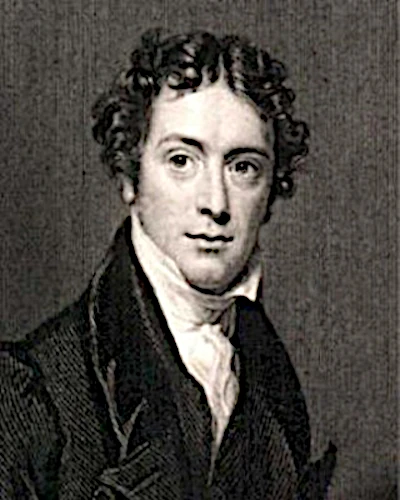
Born in London into a modest family, Michael Faraday (1791-1867) received only a basic education. He became an apprentice bookbinder, which gave him access to scientific books. Passionate about experiments, he attended lectures by the famous physicist and chemist Humphry Davy (1778-1829). Impressed by his motivation, Davy hired him as an assistant at the Royal Institution laboratory. This position marked the beginning of an exceptional scientific career.
In 1821, Faraday experimentally demonstrated the continuous rotation of a conducting wire around a magnet—the first conversion of electrical energy into mechanical motion: the primitive electric motor. In 1831, he discovered electromagnetic induction, establishing that a changing magnetic field induces an electric current. This law, the foundation of the transformer and the alternator, is now known as Faraday's Law: \( \mathcal{E} = -\frac{d\Phi_B}{dt} \) where \( \mathcal{E} \) is the induced electromotive force and \( \Phi_B \) is the magnetic flux.
Faraday avoided advanced mathematics, preferring to rely on observations and mental models to understand electric and magnetic fields. He introduced the concept of lines of force to visualize interactions, a concept later adopted and formalized by James Clerk Maxwell (1831-1879) in his equations.
Faraday's electric motor, created in 1821, was a pioneering experiment demonstrating the direct conversion of electrical energy into mechanical energy through magnetic interaction. His experimental setup essentially consisted of a permanent magnet immersed in a water bath, with a conducting wire suspended above, connected to a direct current source.
When current flowed through the wire, it experienced a Lorentz force given by: \( \vec{F} = I \, \vec{L} \times \vec{B} \) where \( I \) is the current intensity, \( \vec{L} \) is the direction vector and length of the wire carrying the current, and \( \vec{B} \) is the magnetic field of the magnet. This force, perpendicular to the wire and the magnetic field, caused continuous circular motion of the wire around the magnet.
This experiment illustrated the fundamental principle of the electric motor: electromagnetic coupling allows the transformation of electrical flow into mechanical work. Although rudimentary, this experimental machine foreshadowed modern electric motors, which are more efficient and complex, used in countless technological applications.
Faraday avoided advanced mathematics, preferring to rely on observations and mental models to understand electric and magnetic fields. He introduced the concept of lines of force to visualize interactions, a concept later adopted and formalized by James Clerk Maxwell in his equations.
Faraday also isolated benzene, invented the first gas liquefaction device, and studied electrochemical phenomena. Refusing any military involvement, he illustrated exemplary scientific ethics. The Faraday cage and the unit of electrical capacitance, the farad, bear his name.
| Characteristic | Michael Faraday | James Clerk Maxwell |
|---|---|---|
| Education | Self-taught, experimenter | Theoretical mathematician and physicist |
| Tools | Experimentation, lines of force | Vector differential equations |
| Major Contribution | Electromagnetic induction | Formulation of the equations of electromagnetism |
| Legacy | Experimental foundations of electrodynamics | Unification of the laws of electricity and magnetism |